Before COVID-19, Noggin had a FULL schedule of immersive volunteer outreach visits on the calendar for spring, including public art and science talks, school sessions, community experiences – even exciting road trips to Poulsbo, Washington and Bend, Oregon!
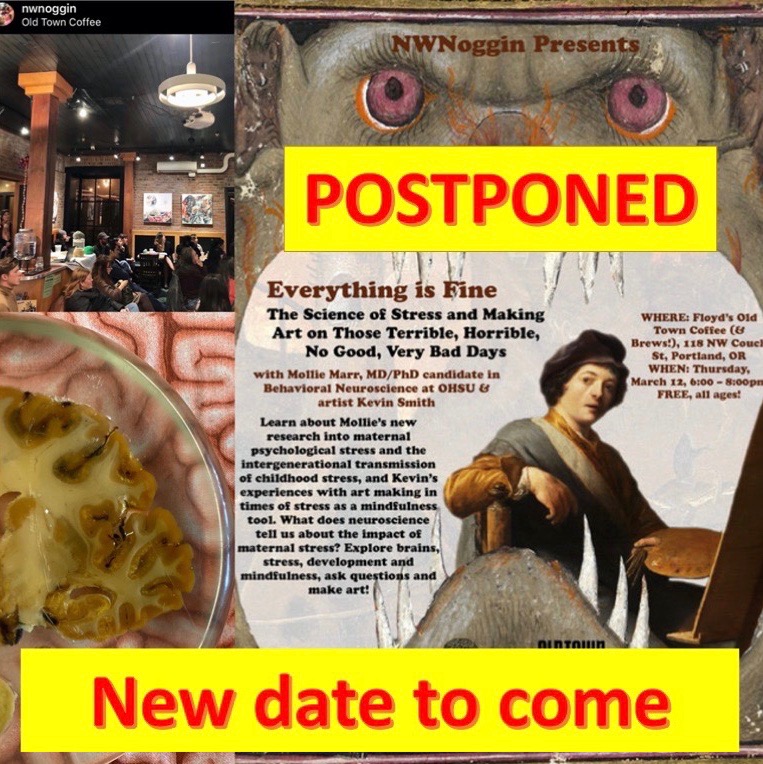
But how do you engage in outreach during a pandemic?
The core of our efforts is valuing others – their insights, perspectives, creativity, and our shared desire to learn more and understand. And that doesn’t change even when we’re confronted by a virus, and physically disconnected and isolated from each other in separate spaces.
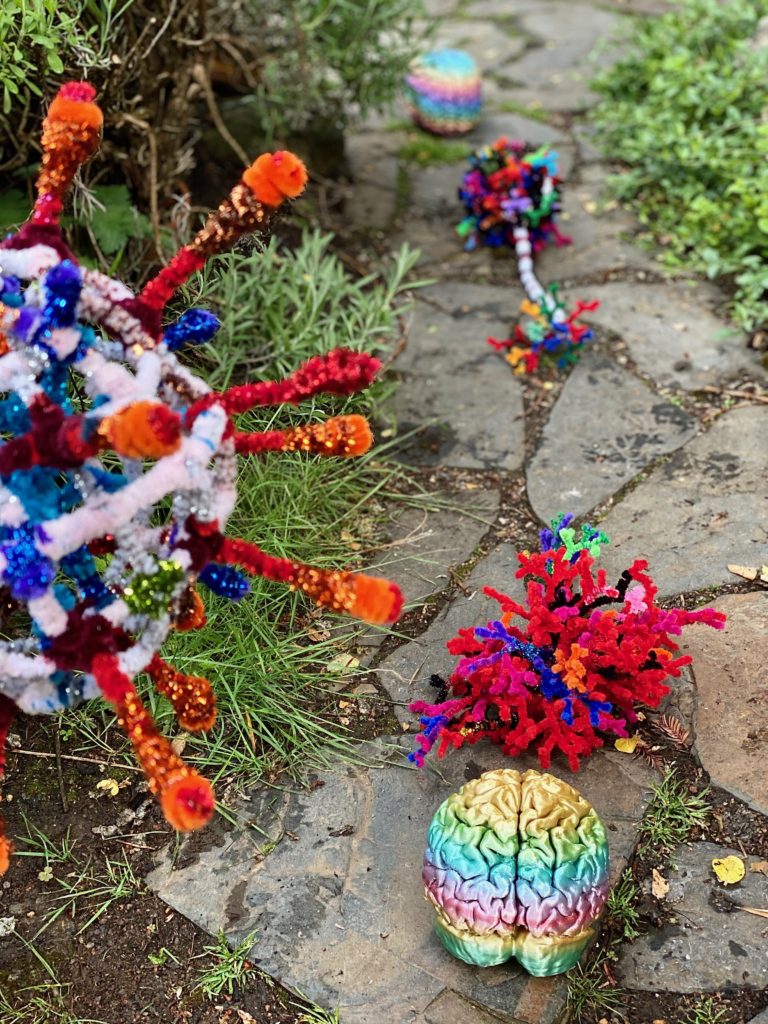
So we reached out, made connections, considered questions and created art with eager 6th – 8th graders in Portland Public Schools! The PDX 3D Printing Lab donated new brain models, and the Portland Alcohol Research Center (PARC) at OHSU provided art supplies, Noggin t-shirts and webcams!
LEARN MORE: Noggin ONLINE @ PPS Creative Science!
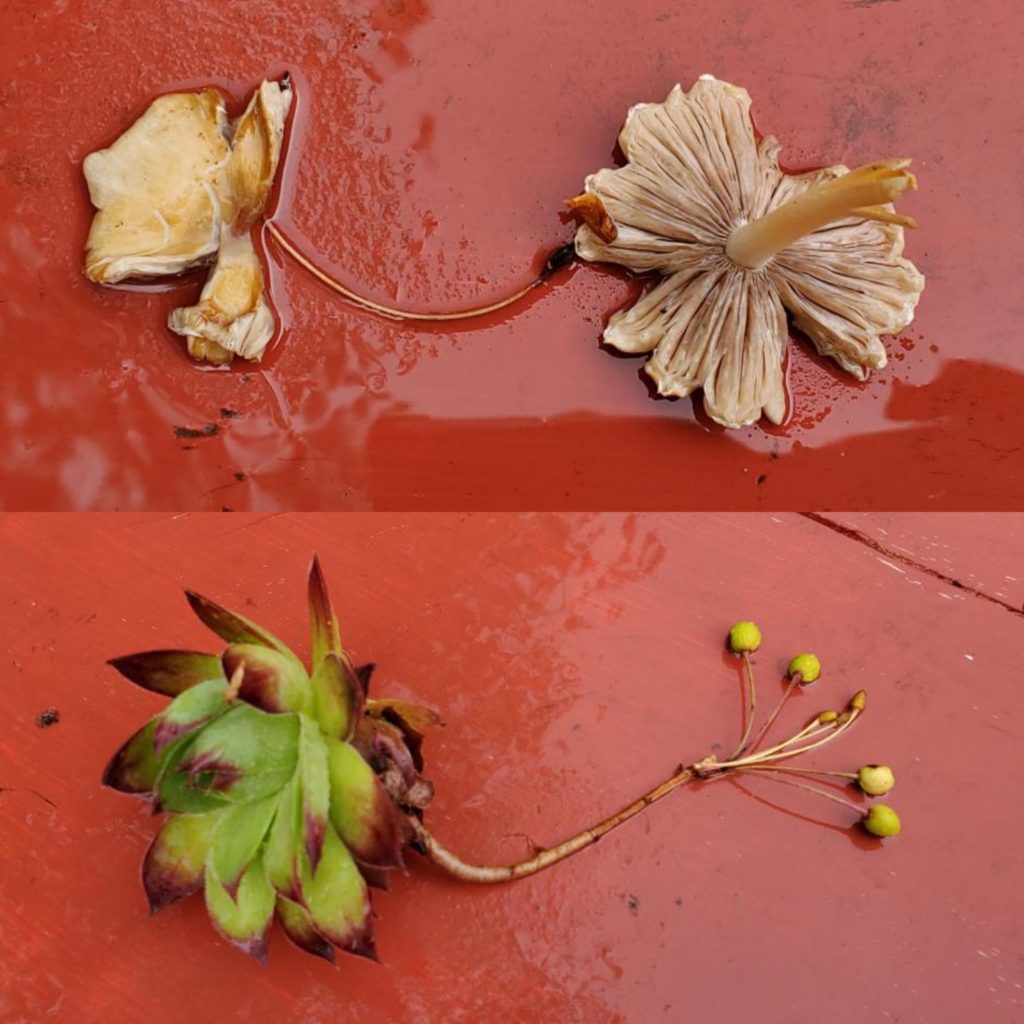
We’re now building brain cells (both neurons AND glia) out of found materials, since pipe cleaners may be hard to get (or deliver) – and renewing and strengthening our synaptic community connections.
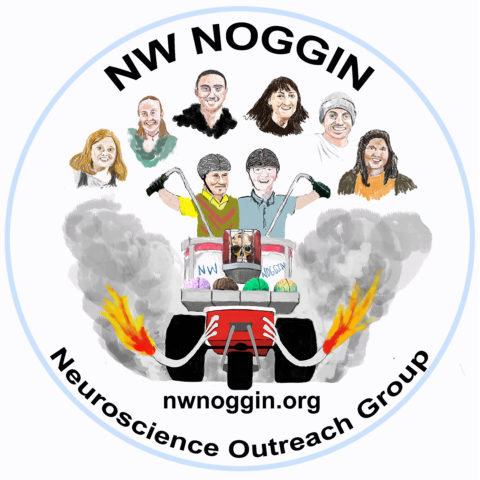
#Showusyourbraincell & learn more below!

LEARN MORE: Science Matters
LEARN MORE: Make a Pipe Cleaner Neuron (& More!)
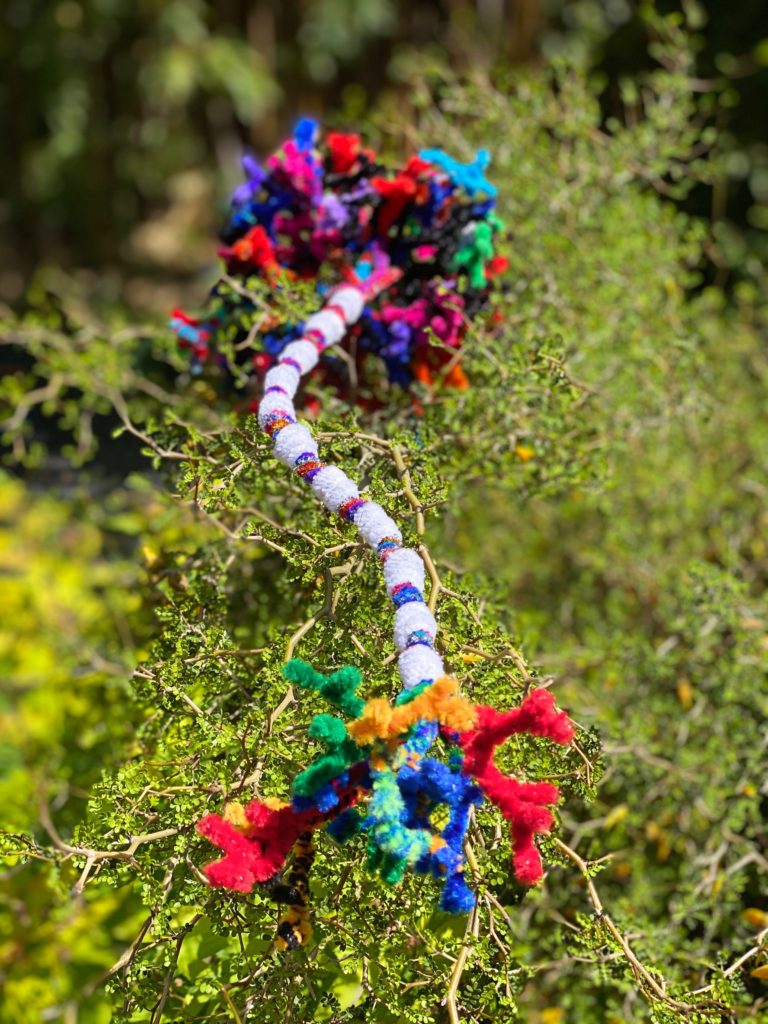
No boredom here!
Post by Brandan McClain, Portland Public School Teacher
Thank You, NW NOGGIN!
In an exciting and stimulating distance-learning experience, about 50 students from my 6th, 7th, and 8th grade Humanities Class at Creative Science School in Portland welcomed about a dozen brilliant volunteers from NW NOGGIN to our electronic classroom today. In a crowded Google Meet screen, students and volunteers talked about brains, behavior, memory, dreams, art, and lots of other topics for well over an hour.
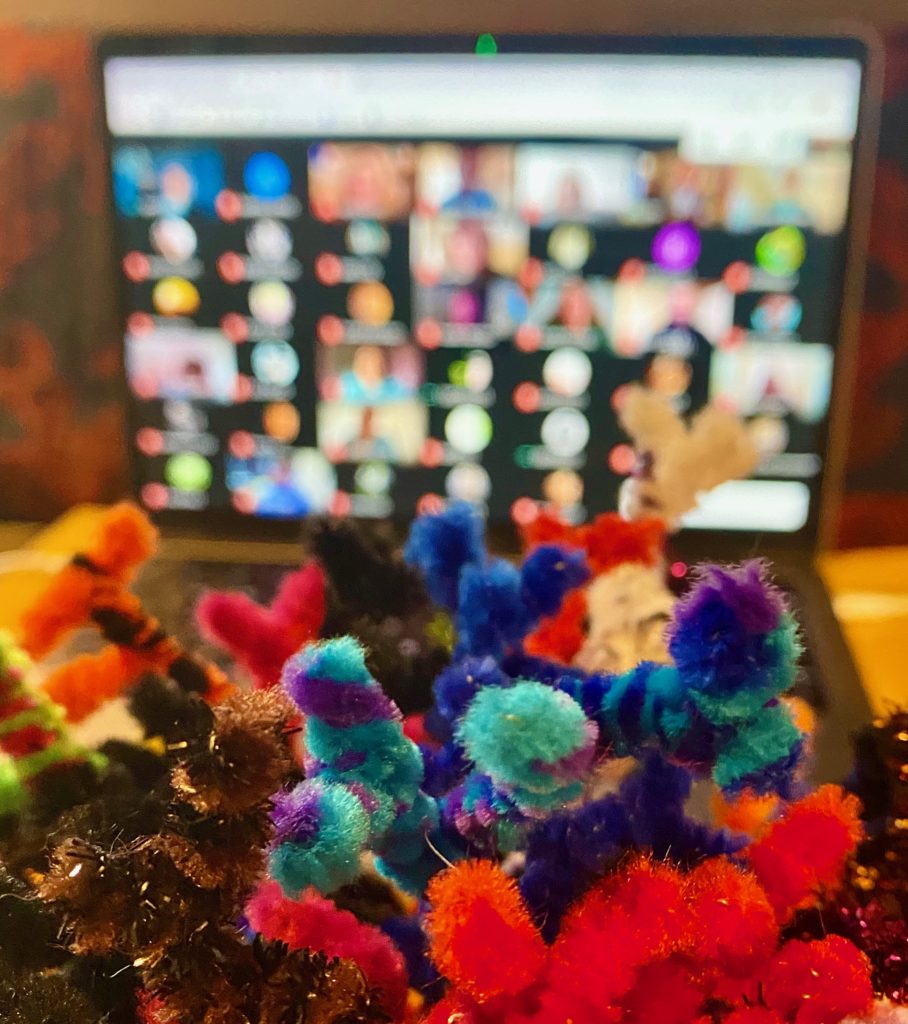
Prior to the meeting, students had been invited to contribute questions related to their brains and behavior. NW NOGGIN’s knowledgeable volunteers, who are all studying or working in various fields related to neuroscience, had prepared some answers and readied themselves with resources and information.
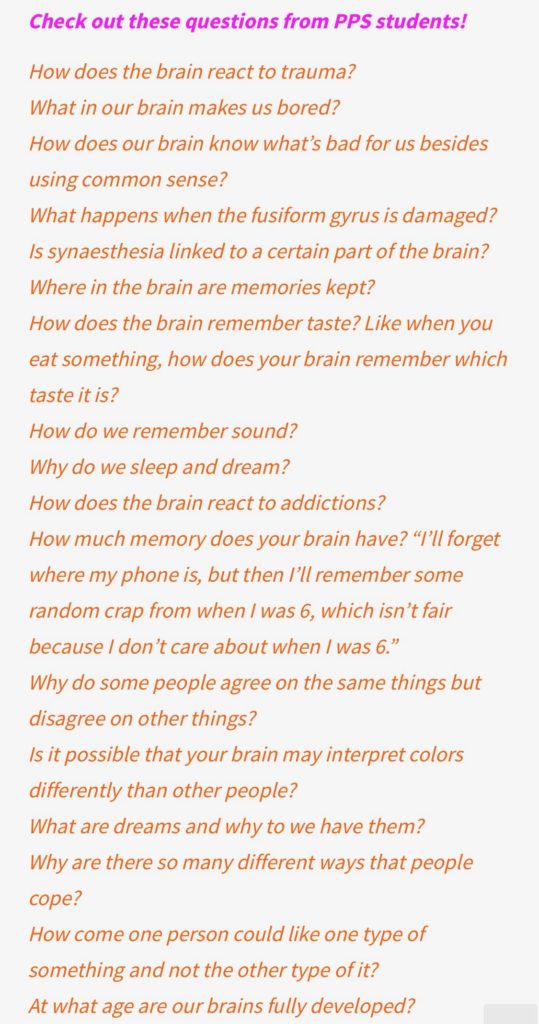
PLEASE NOTE: Responses from Noggin participants coming in a separate post! Our expert, enthusiastic volunteers included Lidia Echeverria-Garcia, Kassidy Fitzgerald, Sydney Duran, Annabelle Winking and Michael Deveney from Portland State University, Isabella Maranghi from PSU and the NIH BUILD EXITO program, Heather Hamilton and Arielle Isakharov from OHSU, Joey Seuferling and Angela Hendrix from NW Noggin, and Aaron Eisen from the National University of Natural Medicine.
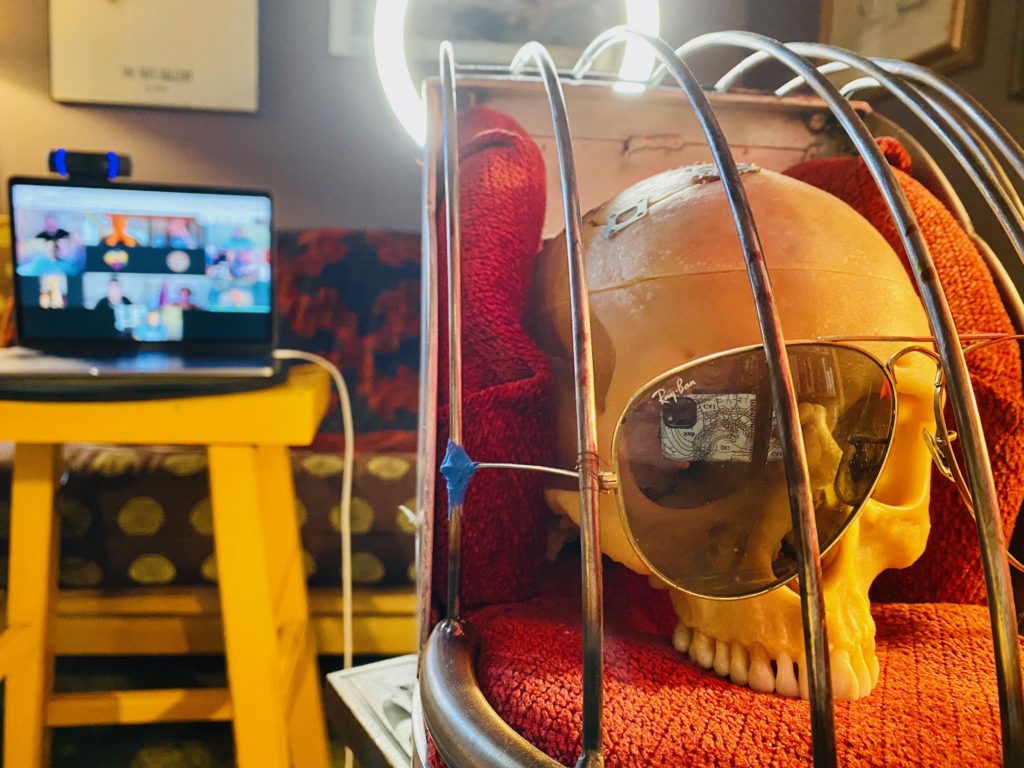
After brief introductions, the discussion kicked off with a conversation about boredom and what the brain is really signaling when we experience boredom. In particular, students responded to the idea that boredom could be a positive feeling that can lead us to find more interesting ways of doing things or push us to seek new experiences. They discussed the particular kind of boredom that comes from interacting with the world primarily through a screen.
LEARN MORE: On the Function of Boredom
LEARN MORE: Being bored at work can make us more creative
LEARN MORE: The Connection Between Art, Healing, and Public Health
LEARN MORE: Boredom as a seeking state: Boredom prompts the pursuit of novel (even negative) experiences
From there, the conversation ranged widely and organically across a wide variety of topics. My students asked about memory, dreams, boredom, personality traits, traumatic brain injuries, and sensory perception.
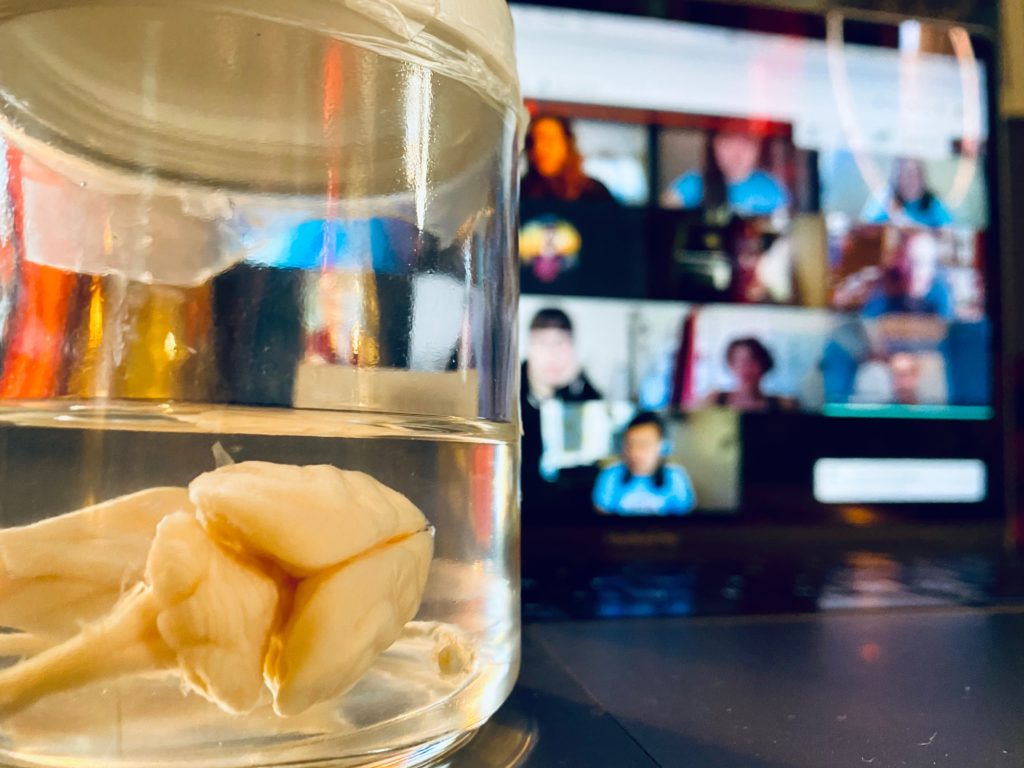
Volunteers responded with information and insights from personal and historical anecdotes, clinical expertise, research findings, and concrete explanations of how and where various impulses are processed in the brain. Students engaged actively in the discussion by asking follow up questions directly and also by adding questions and comments to the ongoing chat stream. Volunteers also answered questions using the chat feature and added clarifying information and links to articles. As the discussion progressed, various volunteers displayed models and specimens of real brains to illustrate their points.
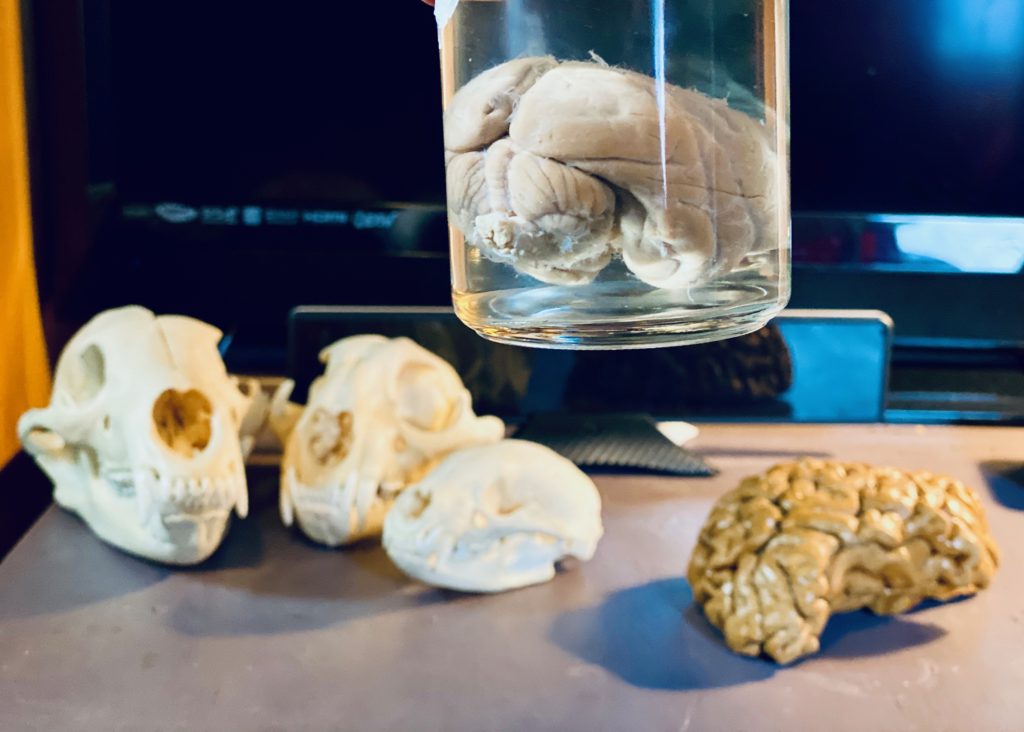
NOGGIN volunteers also shared their assertion that neuroscience concepts can be better understood through creating art.
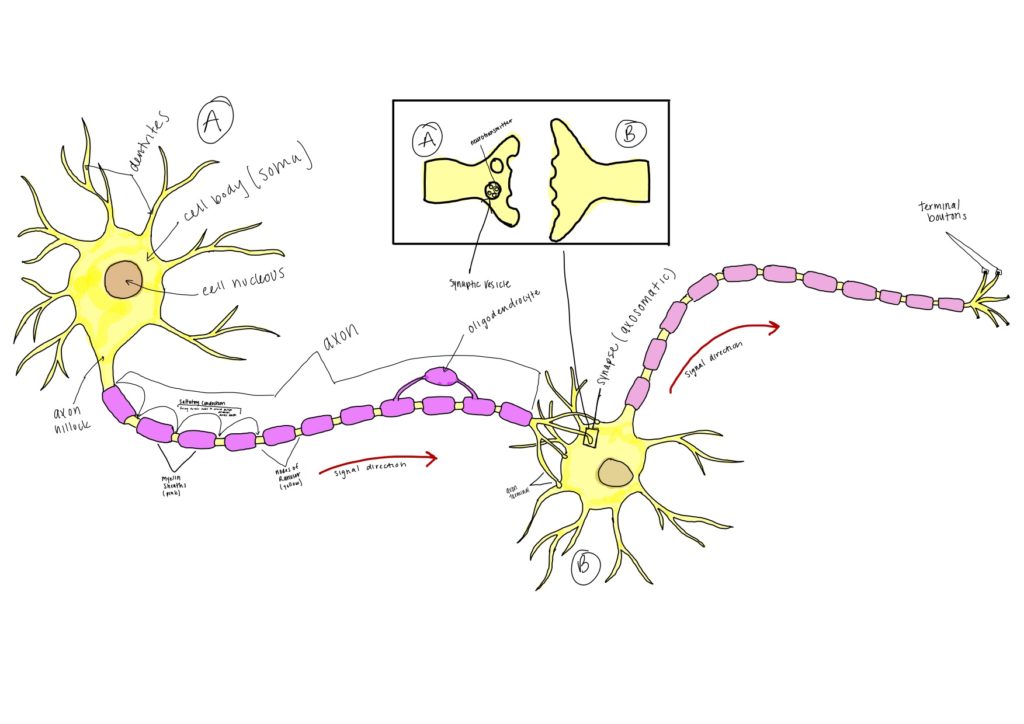
With students engaging remotely from their own homes all over the city (really, the world: one student joined us from Argentina!), we couldn’t necessarily make brain cells out of pipe cleaners. Instead, volunteers presented the idea of making models of brain cells using found objects.
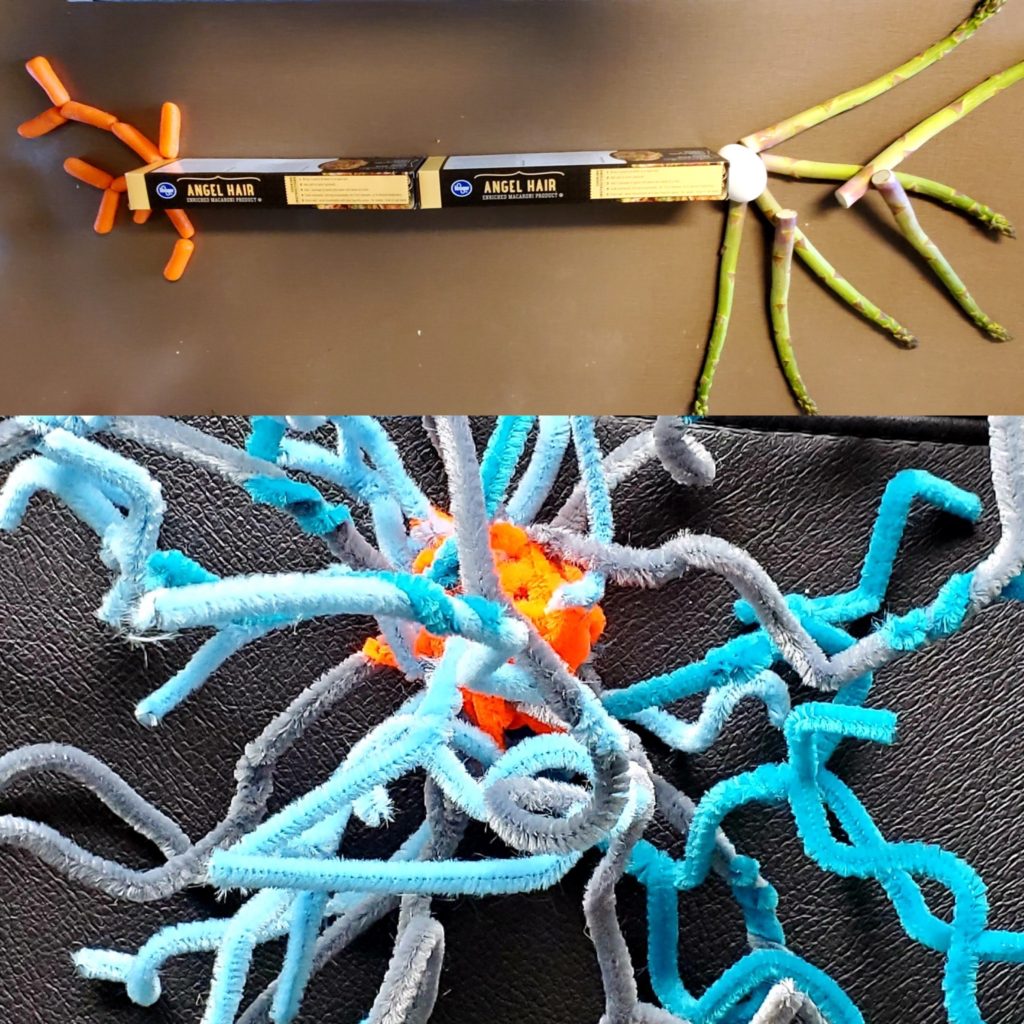
They modeled many of these that they had created, from household items and things found in nature (even a splatter of bird poop!) and challenged students to create their own. Students will be invited to follow up next week with their own found-object neurons.

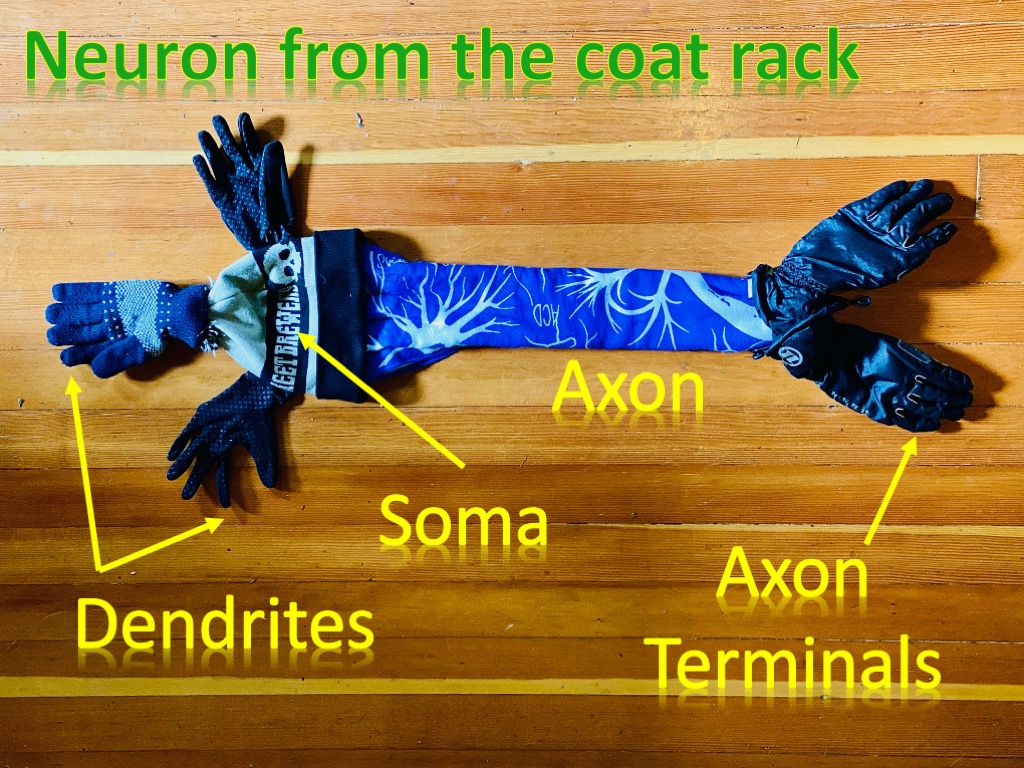
The meeting was originally scheduled to last 45 minutes. I finally had to cut off the discussion and let our volunteers go after nearly an hour-and-a-half of spirited, lively interaction!
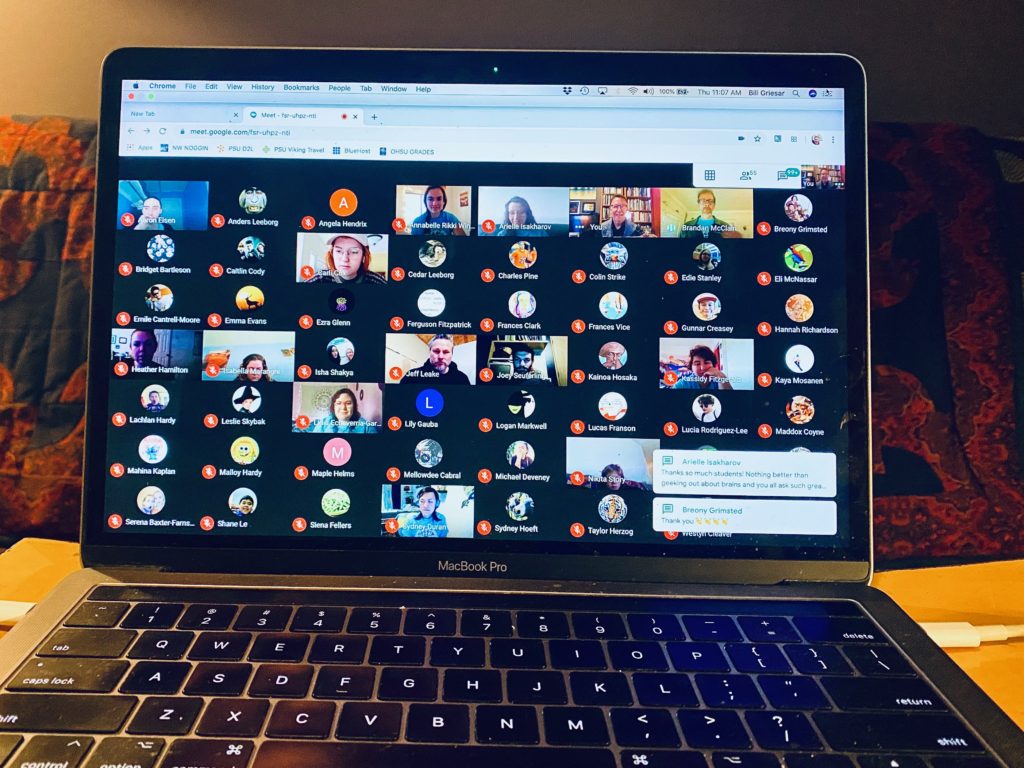
At this point in the term, a couple of months into digital, distance learning, as enthusiasm has definitely begun to decline among my students, I was delighted to see the level of engagement students had during this session.
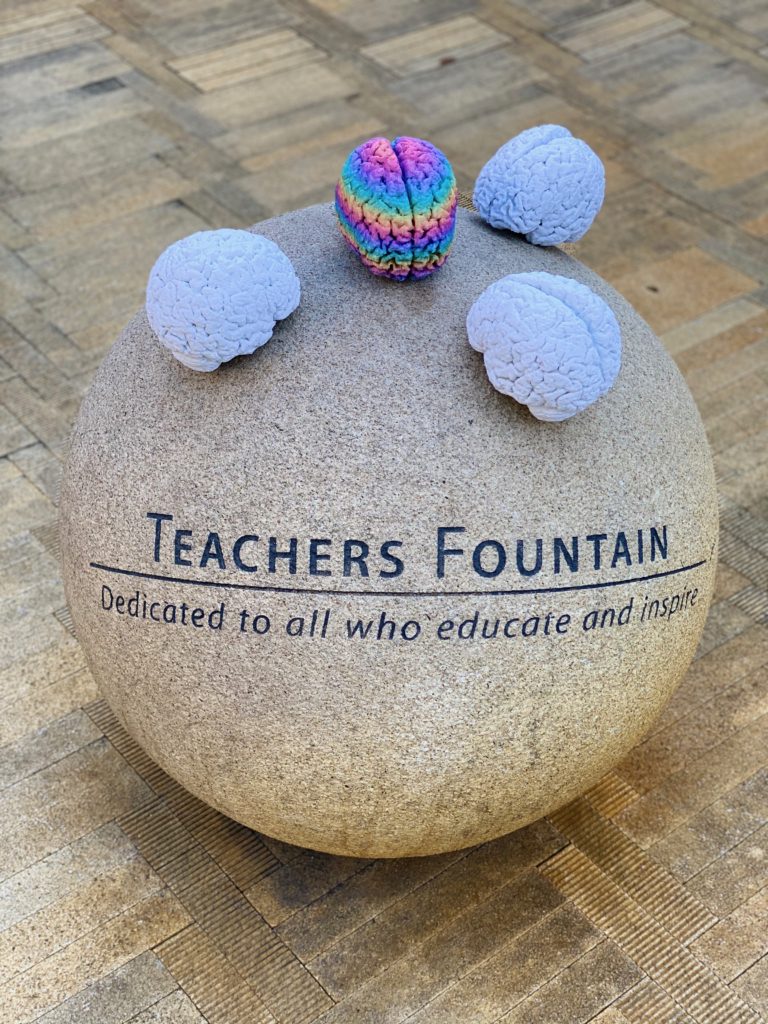
NW NOGGIN’s student-centered approach has provided a profound spark of interest among students when they have come to my brick-and-mortar classroom in the past, and it had the same effect in our digital classroom, giving students a meaningful and engaging experience that validated their experiences and curiosity while exposing them to a great range of scientific understanding.
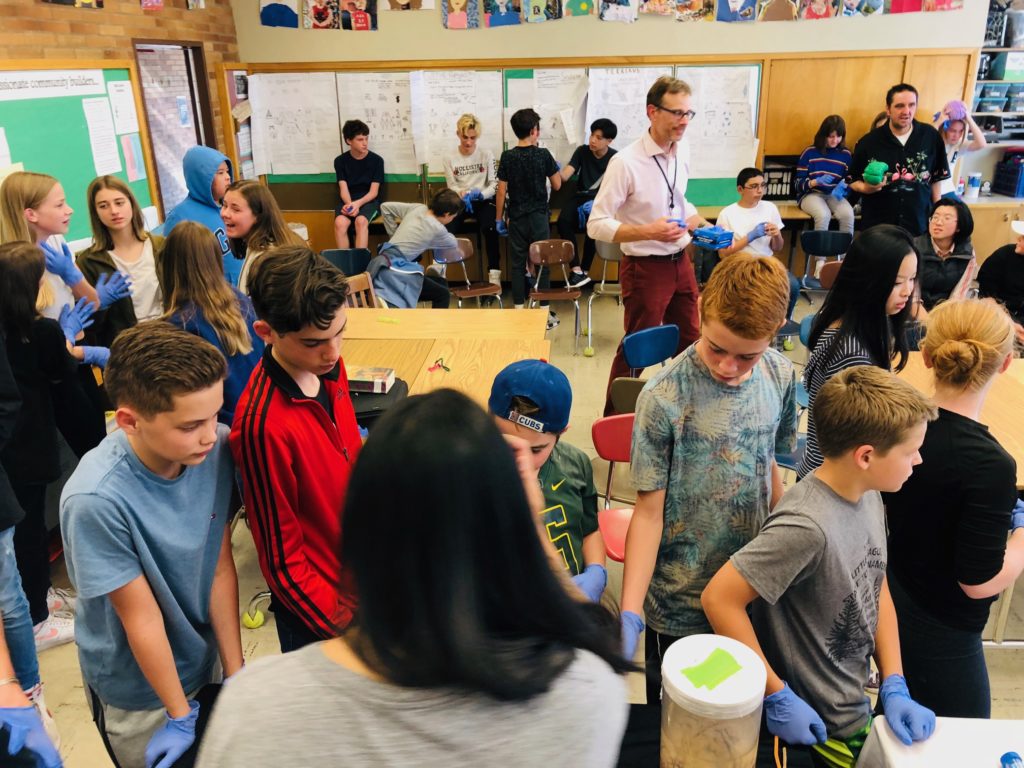
It was awesome.


